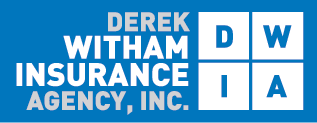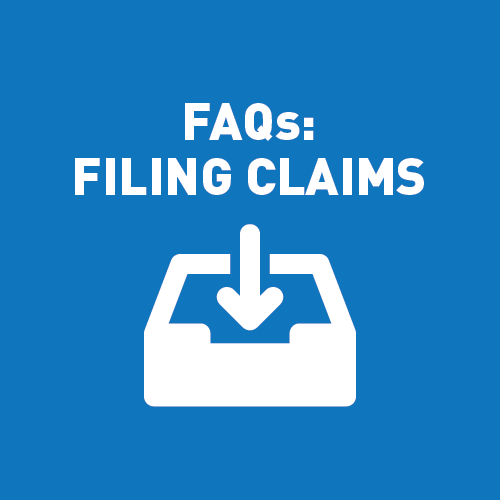FAQs : Filing General Claims
Report The Accident Immediately
You've just had an accident. It may be a minor fender bender or a more serious collision resulting in injuries or extensive damage to one or more cars. Perhaps another motorist was clearly to blame. Regardless of the severity of the accident or who was at fault, there are a number of basic steps you'll need to follow once the initial turmoil subsides. You need to be aware of procedures to file the claim. This can sometimes seem like a complicated and stressful process yet the more you know, the smoother it will be and the greater your chances of being happy with the outcome.
Contact your agent
The first thing you should do is to promptly contact your insurance agent and the insurance company to notify them that you've been in an accident. Do this as soon as possible, even if you're far from home.
You should always notify your insurance company of the accident even if it was minor and not your fault. The insurer should always be informed, regardless of the circumstances. Secondly, always have the police come to the scene and file a report. Letting the other person involved in the accident talk you out of your privilege to file the incident with the police is never a good idea.
Find out how to proceed
Ask us or the insurance company claims representative what you need to do, and what forms or documents you need to support your claim. The insurer may require a "proof of loss" form, as well as medical and auto repair bills, a copy of the police report, and other documents relating to your claim. Supply all the materials and information your insurer needs, and do it in a timely manner because this helps to put the claims process in high-gear!
Read your policy
Although your auto policy isn't exactly a leisurely Saturday read, the days immediately following an accident are probably a good time to look it over. Knowing exactly what your policy covers can help prevent surprises later on.
Keep records of your expenses and other paperwork
Potential out-of-pocket expenses might include medical and hospital bills, car repair bills, rental car costs, and lost wages. Since you will probably need receipts in order to be reimbursed, it's wise to keep copies of these and other important documents in a safe and organized location.
Don't forget your other insurance
Don't forget that other types of insurance (e.g., health, homeowners, etc.) may cover certain losses resulting from an auto accident, depending on the type of loss and other circumstances.
Accidents & Your Insurance Policy
How much will your auto insurance go up after an accident?
Well, it finally happened. You've been in a car accident. Fortunately, you have auto insurance to cover the damage, even though you may have been at fault. Now comes the big question: how much will your premiums go up as a result of this accident? If you weren't at fault, you'll be happy to know that your premium probably won't increase much, if at all. If you were at fault, the following information may help you to understand and anticipate the premium increase you might see.
Why does the premium go up?
Before considering how much your premium might go up, it's helpful to understand why an accident can cause your premium to increase. Very simply, actuarial tables indicate that people who have had at-fault accidents in the past are more likely to have them again. Insurance companies use this information to charge the premium that most accurately reflects your chances of having another accident in the future. People who are at greater risk for accidents should reasonably be expected to pay higher premiums. So if the rate does go up, it's nothing personal against you.
How is the premium increase determined?
In a nutshell, here are a few ways insurers commonly figure out the amount by which they'll raise a premium following an at-fault accident.
Percentage of Base Rate
Insurers typically follow the Insurance Services Office (ISO) standard of increasing your premium by 40-percent of their "base rate" after your first at-fault accident. A base rate is the average amount of all claims paid, plus the insurance company's processing fee. For example, if the insurer's base rate is $400, your premium after the accident will go up by $160. This means that if the premium was $300 before the accident, it will be $460 after the accident. Subsequent accidents would result in greater premium increases.
Percentage of Your Rate
Some insurers use a variation on this method. Instead of using a "base rate," they calculate the premium increase based on the premium you were paying before the accident occurred. Again, for the first at-fault accident, the increase would probably be 40-percent. Under this system, if the annual premium before the accident was $300, it would go up to $420 after the accident. Subsequent accidents would result in greater premium increases.
Safe Driver Insurance Plan
Both of the systems described above are based on the ISO's Safe Driver Insurance Plan, which is typically followed by insurers. The Safe Driver Insurance Plan lists different types of auto accidents and moving violations, and assigns a 'point' value (from 0 to 4) to each type based on the severity of the incident. These points are different than the points that the state department of motor vehicles charges against your driver's license to track your driving record. Under the Plan, as you accumulate points, you are assessed surcharges that generally result in higher insurance rates. The number of points charged determines a premium increase. For example, typically 3 points are charged if you're convicted of drunk driving, triggering a hefty increase. On the other hand, accidents that weren't your fault or for which you covered the losses out of your own pocket (i.e. deductible) generally don't result in any points. Such accidents usually won't make the premium go up at all.
Other Factors
Other factors may also affect premium increases after an accident. These might include, among others, your location, your age, the kind of car you drive, and the "loss experience" of drivers similar to you (meaning total claims made by the group of similar individuals). Most of these factors are independent of the accident itself. The premium might also go up at renewal time if you buy a flashier car that's more expensive to insure in the same policy year that the accident appended.
These same factors can also work to your advantage in some cases. If you turn 40 during the same policy year as the accident, you enter the lowest-risk age group (between 40 and 55) and may be eligible for a discount that will help offset the premium increase caused by the accident. The same is true if you get married during the same policy year, since married persons are considered a lower risk factor.
Have more questions about filing claims? Contact Derek Witham Insurance Agency, Inc. (DWIA) today!

